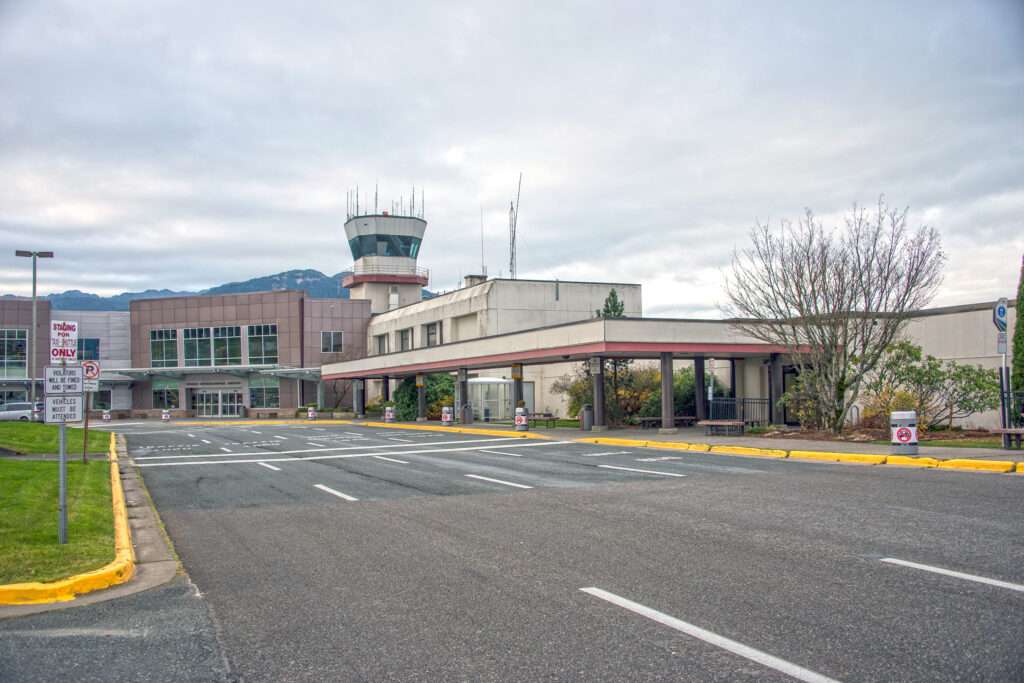Juneau International Airport (JNU), nestled amidst the breathtaking Alaska landscape, boasts a rich history intertwined with the state’s development and the challenges of air travel in a remote region.
Its story begins during a pivotal period, transitioning from a wartime necessity to a vital transportation hub for Alaska’s capital city.
World War II: A Strategic Stepping Stone
The year was 1940, and the world was on the brink of global conflict.
Recognizing the strategic importance of Alaska in the Pacific theater, the U.S. government saw a pressing need for an airfield in Juneau.
Prior to this, passenger flights had landed in Auke Bay, accessible only by seaplane.
The solution came in the form of a hastily constructed landing strip on what was then known as Pan American Airways (PAA) Field.
Seized by the U.S. Army Air Corps in 1942, the airfield became a crucial link for transporting troops and supplies between the newly established Alaskan bases in the Aleutians and the mainland.
The Army significantly extended the runway using fill from nearby mines and paved the surface.
This laid the groundwork for the airport’s future expansion.
Post-War Transition: Civilian Growth and Military Presence
With the conclusion of World War II, PAA Field entered a period of transition.
The federal government’s newly enacted Federal Airport Act of 1946 paved the way for increased federal funding for airport development.
This, coupled with the growing civilian demand for air travel in Alaska, led to the construction of the first terminal building at Juneau Municipal Airport in 1948.
However, the airport’s history remained intertwined with the military.
The U.S. Navy assumed ownership and operation in 1947, reflecting the ongoing strategic importance of Alaska during the Cold War.
This dual-use nature continued for several years, with both civilian and military aircraft sharing the airspace.

The Rise of Commercial Aviation and Alaska Airlines’ Dominance
The 1950s witnessed a surge in commercial aviation across the United States, and Alaska was no exception.
Airlines like Pan Am and Alaska Airlines began offering scheduled flights to Juneau. Alaska Airlines, in particular, played a pivotal role in the airport’s development.
In 1969, they initiated daily Boeing 727 jet service, establishing a long-standing presence at JNU.
Over the years, Alaska Airlines has operated various Boeing 727 and 737 models.
This included combi aircraft that catered to both passengers and cargo, solidifying their position as a dominant carrier at Juneau.
Navigating Challenges: Weather, Geography, and Safety
Juneau International Airport’s location presents unique challenges for air travel.
Surrounded by towering mountains and situated at the end of a long channel notorious for strong winds and fog, landing and taking off can be particularly demanding for pilots.
These factors, along with occasional periods of extreme weather, have necessitated a focus on safety measures and pilot training.
Despite the challenges, JNU has maintained a strong safety record.
This is testament to the expertise of its air traffic controllers and the skill of the pilots who navigate its demanding approach.
Modernization and Looking Ahead
Juneau International Airport has undergone several renovations and upgrades over the years to cater to the evolving needs of passengers and airlines.
The terminal building has been expanded and modernized, offering essential amenities for travelers.
However, the airport’s future development is likely to be shaped by the ongoing need to balance growth with environmental concerns and the unique challenges of its location.
In conclusion, Juneau International Airport’s history is a testament to Alaska’s resilience and its growing role in the global aviation landscape.
From its wartime origins to its current status as a vital transportation hub, JNU has played a significant role in connecting Juneau and Southeast Alaska to the rest of the world.
As Alaska’s tourism industry continues to flourish, JNU is poised to remain a critical gateway for visitors seeking to experience the state’s breathtaking natural beauty.

Click the banner to subscribe to our weekly newsleter.

Click the photo to join our WhatsApp channel so then you can stay up to date with everything going on in the aviation industry!









